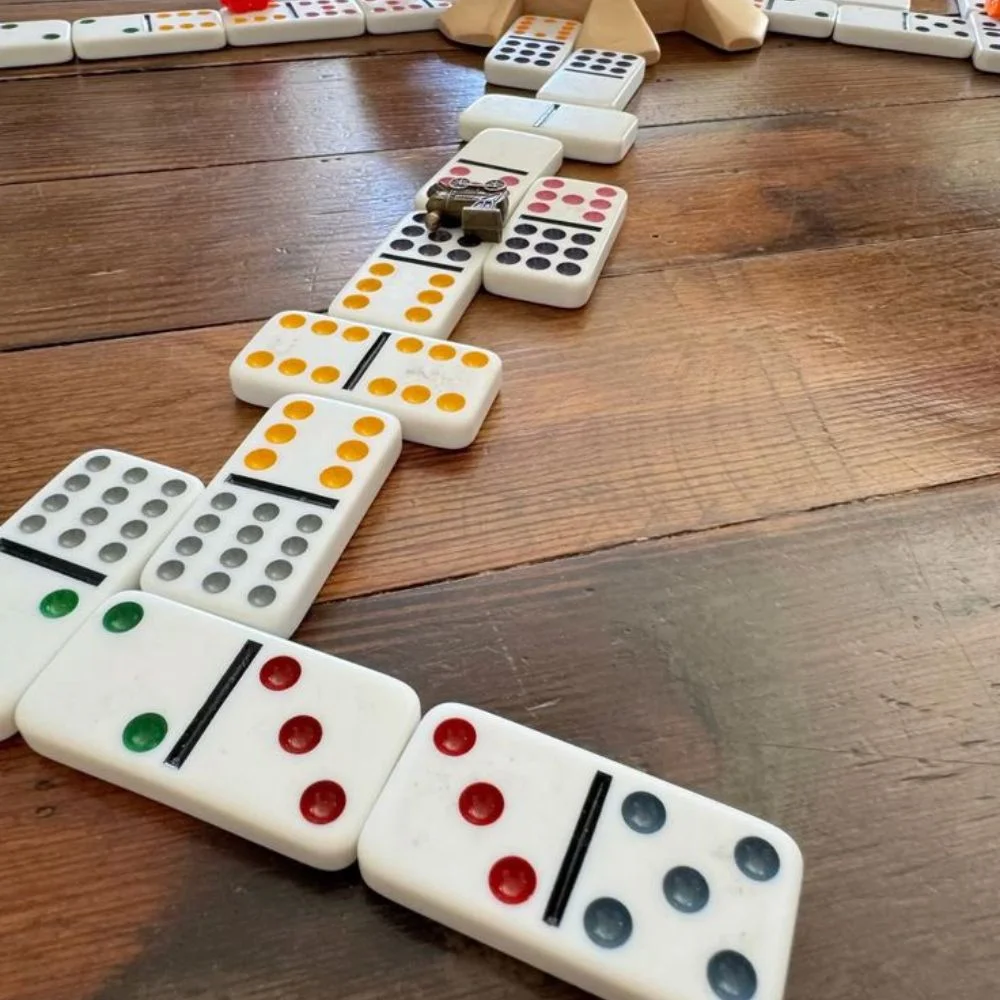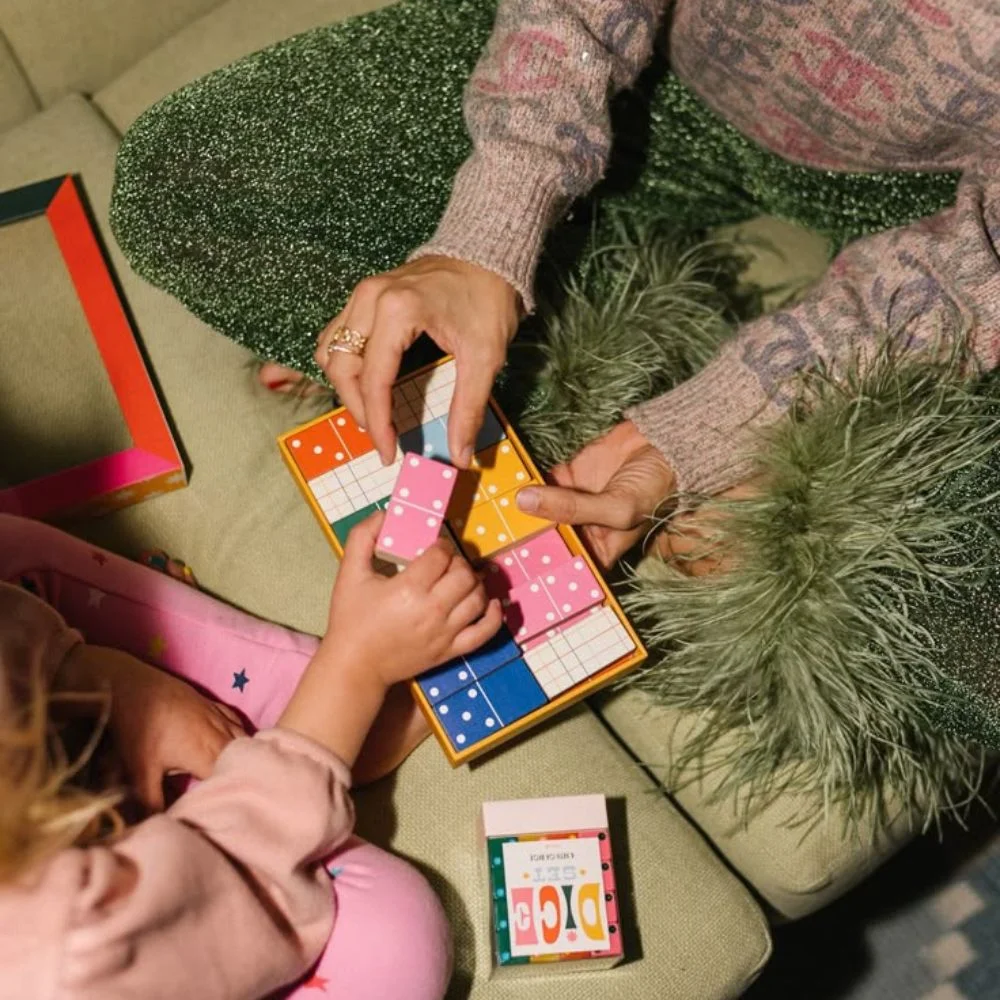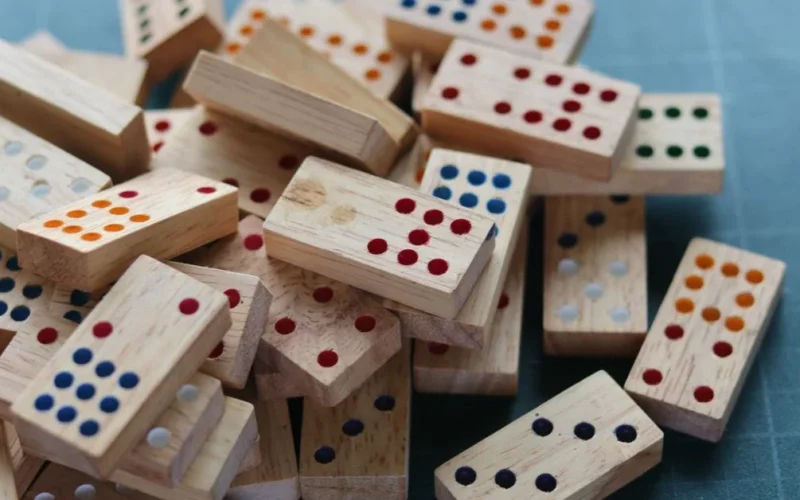Table of Contents
What is Domino’s?
Dominoes is a traditional tile-based game played with rectangular pieces known as “dominoes” or “tiles.” Each tile is divided into two square ends, with each end marked by many spots (called pips) or left blank. The core idea of the game is to match the numbers on your tiles with those already played on the board to be the first to play all your pieces or score the most points, depending on the variation.
Fun Fact: Dominoes originated in China during the Song Dynasty and later spread to Europe in the 18th century.
A Quick Look at the Domino Set
Before starting to play, it’s helpful to know about the types of domino sets:
- Double-Six Set (most common): 28 tiles, ranging from blank to six pips on each end.
- Double-Nine Set: 55 tiles, with pips from 0–9.
- Double-Twelve or higher: Used in larger games or variations.
For beginners, the double-six set is ideal.
How to Play Dominoes: The Basics?
Dominoes can be played in several ways, but the most popular version is Block Dominoes.
1. Setting Up the Game
Players: 2–4 people
Equipment: Double-six domino set
Step 1: Shuffle the Tiles
Turn all the domino tiles face down and mix them well on a flat surface so no numbers are visible. Mix them around with your hands until well-shuffled.
Step 2: Draw Your Tiles
- 2 players: Each draws 7 tiles
- 3-4 players: Each draws 5 tiles
Set the remaining tiles aside; these are known as the boneyard (like a draw pile).
Step 3: Who Goes First?
The player with the highest double tile (like 6|6 or 5|5) goes first. If a double doesn’t show up, toss the tiles back in, give them a good shuffle, and deal a fresh round.
2. Playing the Game
- On their turn, players put down one tile at a time, keeping the game moving.
- The placed tile must match the number of pips on one end of the domino already on the board.
- For example, if the tile on the table is 5|3, you must play a tile that has a 5 or a 3.
- The chain grows from both ends of the initial tile.
If you don’t have a matching tile, keep picking from the draw pile until you get one that fits or until there are no tiles left to draw.
3. Winning the Round
The round ends when:
- A player plays all their tiles (dominoes), or
- No one can make a move (a block).
4. Scoring
- The winner scores points equal to the total number of pips in the opponents’ hands.
- In some versions, you keep a running tally across rounds (usually to 100 or 150 points).
Popular Domino Game Variations
1. Draw Dominoes
Very similar to Block Dominoes, but players must draw from the boneyard if they can’t play, until a playable tile is found (or the boneyard is empty). It makes the game more unpredictable and stretches the excitement over a longer session.
2. Mexican Train

Best with a Double-12 set, this version allows each player to create their chain of dominoes (“trains”) off the central domino. It’s great for large groups and mixes strategy with accessibility.
3. All Fives (Muggins)
Played with a scoring twist: each time you play a tile, if the sum of the open ends is divisible by 5, you score that many points.
Example: [5|0] + [0|5] = open ends = 5 + 5 = 10 → you score 10 points.
Basic Strategy Tips for Beginners
Here are some practical tips to give you the edge:
1. Play High-Value Tiles First
Start with your higher-numbered dominoes to reduce your pip count early important if you’re scoring based on what’s left in your hand.
2. Save Doubles for a Surprise Move
Doubles can be limiting but powerful. Save them for when they can either extend your play or block an opponent.
3. Keep Your Hand Versatile
Try to hold on to tiles with a wide range of pips (e.g., 6|1, 3|0) to increase your chances of making a move.
4. Watch Your Opponents
Pay attention to what numbers they play and, more importantly, what they don’t play. It gives you a hint about what’s in their hand.
Common Mistakes Beginners Make
Even seasoned players fall into these traps:
- Playing Without Matching Properly: Always double-check both ends before playing a tile.
- Forgetting to Draw When Stuck: Don’t skip your chance to draw, your winning tile might be in the boneyard.
- Ignoring the Score: Keep a running score, even casually. It brings a fun twist that makes the game even more engaging.
Playing Dominoes with Kids and Family

Dominoes is a fantastic game for all ages. Here’s how you can make it more family-friendly:
- Use a double-six set for shorter, simpler games.
- Help kids by laying tiles face-up (open hands) for teaching.
Turn it into an educational game: use the tiles to teach counting, addition, or matching.
Dominoes Around the World
Different cultures have put their spin on the game of dominoes:
- Caribbean: Particularly popular in Jamaica and the Dominican Republic. Often played loudly and socially, with slams and banter.
- Latin America: Played in pairs or teams, often as part of family celebrations.
- Asia: Uses different tile systems (like Chinese dominoes) with unique scoring rules.
Wherever you go, the game of dominoes is a shared language of fun and connection.
Final Thoughts
Whether you’re just getting started or brushing up for your next domino duel, you now have everything you need to confidently join the table. From rules and strategies to tips and variations, dominoes is easy to learn, endlessly fun, and full of friendly competition. Dominoes is one of those games that’s easy to learn but takes time to truly master. It combines luck with logic, and above all, it’s fun. And remember, the best way to learn is by doing.








